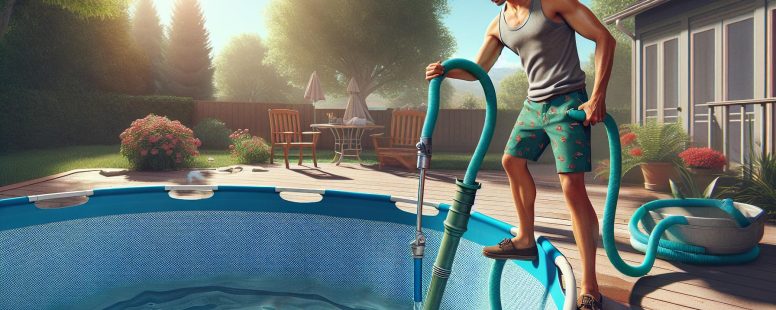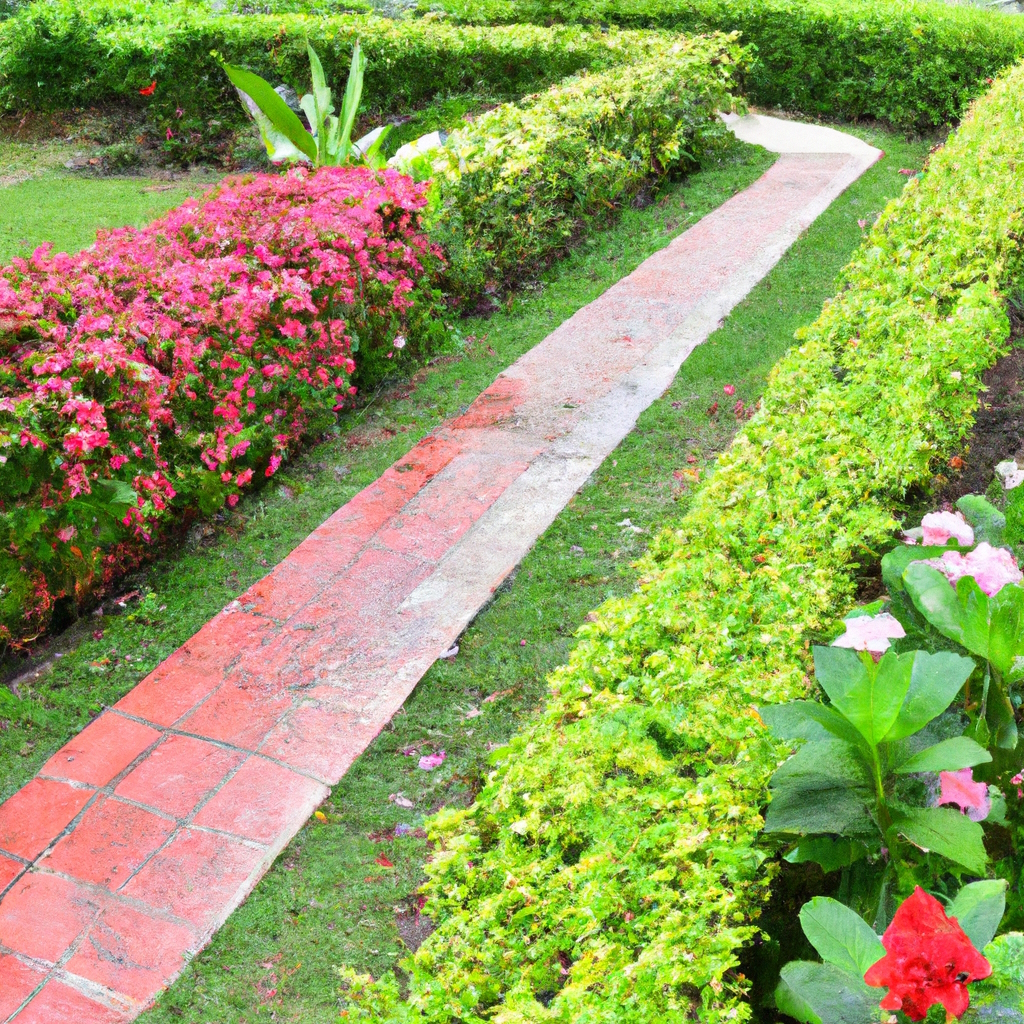Master The Technique: How To Drain An Above Ground Pool – A Comprehensive Step-By-Step Guide
Choosing the Right Time to Drain Your Pool
Draining an above ground pool involves careful timing and consideration. The season, temperature, and wear and tear all impact when you’d decide to drain your pool. Let’s investigate into the factors that influence this decision.
Understanding Seasonal Variations
Considering the seasons makes a significant difference in pool maintenance. In extreme climates, temperatures swing wildly from summer to winter, directly affecting how often and when you’d want to drain your pool.
For instance, in temperate areas, summertime sees frequent use of the pool, leading to increased contamination levels and greater water replacement needs. That’s why early spring, before heavy-duty summer use, is an ideal time to drain and refill your pool.
But, in cooler climates, winter presents special challenges. Ice formation and freeze-thaw cycles can harm your pool’s structural integrity, especially if it’s already facing other maintenance issues. So, draining your pool in late fall, after the swimming season ends and before the cold sets in, makes practical sense.
Assessing Water Condition and Maintenance Needs
Apart from seasonal considerations, the condition of your pool’s water and its maintenance requirements also determine when you’d choose to drain it.
High levels of contaminants, noticeable algal blooms or cloudy water – these signs indicate the need for immediate water replacement. Likewise, if you’re contending with persistent problems like damaged pool liners, leaky pumps, or deteriorating pool decks, you may need to drain your pool right away, irrespective of the season.
Remember, draining your pool isn’t an operation to be undertaken lightly. It’s essential to balance the need for clean, safe water with the costs, both energy and monetary, associated with draining and refilling your pool. Spending the time to correctly assess your pool’s condition results in a healthier, safer swimming environment.
Preparing to Drain Your Above Ground Pool
It’s important to keep in mind that preparation is key if you’re thinking about draining your above ground pool, whether for maintenance, cleaning, or seasonal changes. This next portion of the guide provides specifics on the preparatory steps necessary for a successful drainage.
Gathering Necessary Supplies
Before you start the drainage process, it’s vital to gather all the essential supplies. A good place to start is by getting a pool pump, hoses, or a submersible drainage pump. For instance, a 1/4 HP submersible utility pump would come in handy, offering you high-speed water discharge.
Beside the pool pump, other supplies you might need include a clean-out plug wrench to loosen the filter plug and a spill kit to help deal with any unforeseen spills during the process.
Here’s a summarized chart of the essential supplies for your pool draining journey:
| Essential Supplies | Example Products |
|---|---|
| Pool Pump | 1/4 HP Submersible Utility Pump |
| Hoses | Heavy-Duty Pool Pump Hoses |
| Clean-Out Plug Wrench | Filter Cartridge Cleaner Tool |
| Spill Kit | Absorbent Barrier Spill Kit |
Remember, these supplies might vary depending on the type and size of your above ground pool.
Checking Local Regulations
Draining a pool isn’t as simple as removing a plug and letting the water flow, particularly when you have strict local ordinances to follow. You see, some areas might have rules against draining pool water into public sewers.
For instance, an area with strong environmental laws may require you to dechlorinate your pool water before draining it. Other regulations may mandate the use of a specific drainage system or authorize disposal only in designated places.
Hence, before draining your pool, contacting your local authorities can provide necessary information and help you avoid any legal repercussions. It’s not as challenging as it might seem, a simple call to your local health department can save you a ton of headache down the line.
By carefully following these preparatory steps, you set yourself up for a successful and hassle-free pool drainage process. Stick around for the upcoming section where we’ll guide you through the specifics of exactly how to drain your pool efficiently and effectively.
Step-by-Step Guide to Draining Your Pool
Moving on from the preparatory measures, let’s plunge directly into the draining procedure. This section elucidates the necessary steps needed for emptying an above ground pool. Please understand that while the procedure seems straightforward, caution is utmost to avoid any mishaps.
Starting with a Siphon or Pump
Begin the draining process using a siphon or pump. These tools, especially designed to handle larger volumes of water, are your best bet to execute this task effortlessly. Here’s how you do it:
- Fund first by placing one end of the garden hose in the pool. Ensure it’s completely submerged.
- Make certain, having grounded the other end of the hose, thread it away from the pool to a wastewater drain or onto a dry patch of ground.
- Syphon initiates, if with a pump, by turning it on. For siphoning using a hose, fill the hose with water, then plug one end and move it lower than the pool’s level. Release the plug to start draining.
- Observe, during the entire process, to make sure that the water drains into the correct place and does not cause flooding or erosion.
Ensuring Efficient Water Removal
Efficient water removal is essential to prevent water stagnation and faster pool cleanups. Here’s how you ensure it:
- Verify frequently, the pool walls for any signs of obeisance under the water’s weight. If the walls start to buckle, halt the draining process and consult a professional.
- Coil up, using an additional pump or increasing the pump’s speed, can expedite the drainage if it feels too slow.
- Ensure, as the water level drops, adjust the hose position or pump suction to continue draining effectively.
- Inspect the pool for any leftover water once the majority drained off. You can use a sponge or mop for moisture clearance.
Remember, draining an above ground pool isn’t rocket science. All it takes is attention to detail, careful handling, and a bit of patience.
Post-Draining Maintenance
After you’ve drained your above ground pool, it’s time to shift focus to post-draining maintenance. Without adequate maintenance, you run the risk of jeopardizing your pool’s usability. To avoid this, let’s look at the critical maintenance steps, namely cleaning the pool liner and inspecting for damages.
Cleaning the Pool Liner
Cleaning the pool liner becomes crucial once the pool is drained. A cleaner pool liner not only enhances the pool’s look but also helps maintain pool hygiene. Begin by using gentle pool liner cleaners. Standard household cleaners can disrupt the pool chemistry when refilled, posing threats to skin and health.
- Scrub gently: Use a soft brush to remove any stubborn stains or algae build-up. Hard brushes might lead to liner damage.
- Rinse well: Make certain, post-cleaning, that you rinse the liner thoroughly, lest any residues can interfere with pool chemistry.
- Dry the liner: Though not mandatory, in some instances, letting the liner dry can extend its life.
Inspecting for Damage
What better time to evaluate your pool for any potential defects than when it’s empty? Inspecting for damage is an effective preventative measure, allowing you to rectify issues before they escalate.
- Check the liner: Look for leaks, rips, or tears. Minor liner damages can be patched up with a simple repair kit.
- Examine the pool structure. Ensure the panels, railing, and supports show no signs of corrosion or weakness.
- Inspect the pool equipment: Carry out a detailed examination of your pump, heater, filters. If you notice signs of wear or any malfunctions, consider hiring a professional for repairs.
Conclusion
Draining your above ground pool doesn’t have to be a challenging job. By choosing the right time and assessing the water quality, you’re already on the right track. Remember, using a siphon or pump can make the draining process more efficient. But don’t forget to keep an eye on the process to avoid potential issues like flooding. Once the water’s out, it’s all about maintenance. Clean the liner, scrub off the stains, rinse well and let it dry if you prefer. A thorough inspection for any damages to the liner, pool structure or equipment is also a must. If you spot any, don’t hesitate to call in the pros. With these steps, you can ensure your pool is ready for the next swim season.
- When Is Peak Season for Hot Tub Rentals in the US? Find Out Best Times to Book - November 10, 2025
- Where Can I Market My Yard Game Rentals? Top Strategies to Boost Your Business - November 10, 2025
- Why Is Microgreens Farming Popular for Small Spaces? Top Benefits Explained - November 9, 2025




